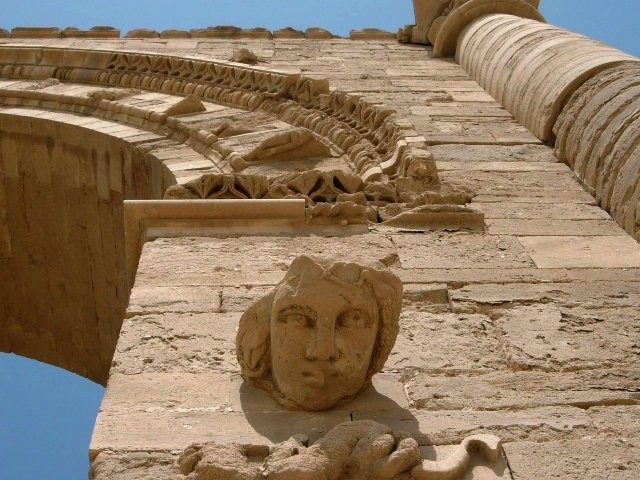The Islamic State (ISIS/ISIL) destroyed the archaeological site of Hatra in northern Iraq. As the terrorist group extends its caliphate, its jihadist soldiers exterminate anything that, in their eyes, promotes idolatry.
Residents in Hatra told Iraqi officials the militants brought bulldozers to the site after two large explosions went off on Saturday morning. Kurdish official Saeed Mamuzini claimed witnesses saw the militants “carrying away artifacts from Hatra as early as Thursday,” just two days before they destroyed the city.
“ISIS stole the ancient gold and silver coins, which were used by the Assyrian kings and were stored in the city,” he said.
Hatra became a UNESCO World Heritage Site in 1985. The organization condemned the demolition of the historic city.
“The destruction of Hatra marks a turning point in the appalling strategy of cultural cleansing under way in Iraq,” stated UNESCO head Irina Bokova.
According to UNESCO, the Seleucid Empire built Hatra in the 3rd or 2nd century BC. The Parthian Empire captured the city in the 1st century BC, which allowed the city to prosper and become the capital of the first Arab kingdom. It survived invasions by the Romans in 116 and 198 AD due to “its high, thick walls reinforced by towers.” The city was used in the opening scene of The Exorcist.
The Iraqi tourism and antiquities ministry blamed the international community for the fall of Hatra.
“The delay in international support for Iraq has encouraged terrorists to commit another crime of stealing and demolishing the remains of the city of Hatra,” the ministry said in a statement.
On Friday, residents reported an attack on the Assyrian city of Nimrud. Assyrian King Shalmaneser I built Nimrud in the 13th century BC. King Ashurnasirpal II made it the capital of Assyria in the 11th century BC. Bovoka issued a statement after the Iraqi government confirmed the Islamic State attacked the city:
I condemn in the strongest possible manner the destruction of the archaeological site of Nimrud site in Iraq. This is yet another attack against the Iraqi people, reminding us that nothing is safe from the cultural cleansing underway in the country: it targets human lives, minorities, and is marked by the systematic destruction of humanity’s ancient heritage,” said UNESCO Director General Irina Bokova.
We cannot remain silent. The deliberate destruction of cultural heritage constitutes a war crime. I call on all political and religious leaders in the region to stand up and remind everyone that there is absolutely no political or religious justification for the destruction of humanity’s cultural heritage.
Suzanne Bott, the heritage conservation project director for Iraq and Afghanistan in the University of Arizona’s College of Architecture, Planning and Archaeology, said Nimrud is one of the more important cities in world history. It is one of the Assyrian capitals “that practiced medicine, astrology, agriculture, trade and commerce, and had some of the earliest writings.”
“It’s really called the cradle of Western civilization, that’s why this particular loss is so devastating,” Bott said. “What was left on site was stunning in the information it was able to convey about ancient life. People have compared it to King Tut’s tomb.”
The Islamic State destroyed Jonah’s tomb in Mosul when they captured the city last June. They demolished all Christian institutions in the city. A video surfaced in February of militants destroying thousand years-old artifacts in a Mosul museum. The terrorists also targeted libraries and universities where they burned all non-Islamic books.
However, the priceless antiques are not worthless for the radical Islamic group. The sale of antiques to collectors, including Westerners, turned the Islamic State into billionaires. The Wall Street Journal reported on the Syrian “Monuments Men,” who work to preserve the precious history. A cleric and American priest worked before and after the invasion of Mosul to preserve manuscripts. But each video that surfaces is another punch in the face to historians.

COMMENTS
Please let us know if you're having issues with commenting.